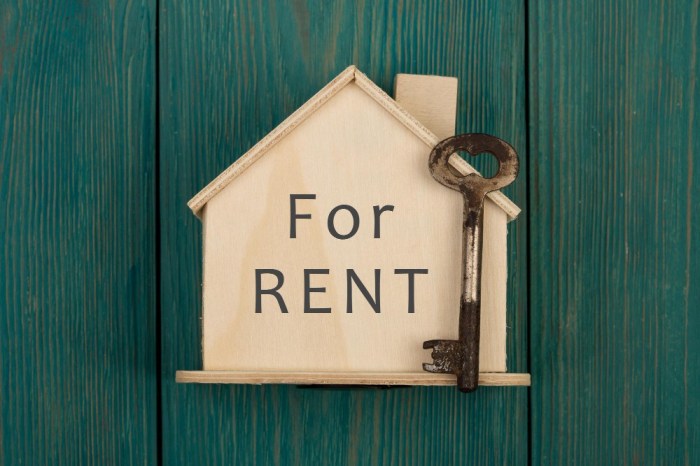Landlords That Rent Houses A Comprehensive Guide
Finding Landlords Who Rent Houses
Landlords that rent houses – Finding suitable rental properties often begins with locating landlords who rent houses. Several online platforms and resources facilitate this process, each with its own advantages and disadvantages. Understanding these nuances is crucial for a successful search.
Online Platforms and Resources for Finding Rental Houses
Numerous online platforms specialize in connecting prospective tenants with landlords. These include popular websites like Zillow, Trulia, Apartments.com, and Realtor.com. Each platform offers a unique set of features and search filters, allowing users to refine their search based on location, price range, property type, and amenities. Additionally, Craigslist and Facebook Marketplace often feature rental listings, although these platforms may require more caution due to the lack of centralized verification processes.
Advantages and Disadvantages of Different Platforms
- Zillow, Trulia, Apartments.com, Realtor.com: Advantages include extensive listings, advanced search filters, user reviews, and often professional photos. Disadvantages can be the presence of outdated listings or listings from less-than-reputable sources, and the possibility of needing to contact multiple agents.
- Craigslist and Facebook Marketplace: Advantages include potentially lower rental rates and direct contact with landlords. Disadvantages include a higher risk of scams, lack of verification of listings, and less detailed information about properties.
Comparison of Information Provided by Listing Sites
Listing sites vary in the level of detail they provide. Some offer virtual tours, detailed property descriptions, and high-quality photos, while others may only provide basic information like address, price, and number of bedrooms. It’s important to compare multiple listings to get a comprehensive picture of available properties.
Step-by-Step Guide for Searching for Rental Houses Online
- Define your needs: Determine your budget, desired location, preferred property type, and essential amenities.
- Use multiple platforms: Search across various websites to maximize your chances of finding suitable listings.
- Refine your search: Utilize search filters to narrow down results based on your criteria.
- Review listings carefully: Pay attention to details such as photos, descriptions, and reviews.
- Contact landlords directly: Reach out to landlords to inquire about availability and schedule viewings.
- Verify information: Confirm details independently before making any commitments.
Landlord-Tenant Relationships
The landlord-tenant relationship is governed by a lease agreement outlining the rights and responsibilities of both parties. Maintaining open communication and understanding these responsibilities is essential for a positive and productive relationship.
Responsibilities of Landlords and Tenants
Landlords are typically responsible for maintaining the habitability of the property, including necessary repairs and addressing safety concerns. Tenants are generally responsible for paying rent on time, maintaining the cleanliness of the property, and respecting the terms of the lease agreement.
Typical Clauses in Lease Agreements
Lease agreements typically include clauses addressing rent amount and payment schedule, lease term, permitted use of the property, responsibilities for repairs and maintenance, and procedures for lease termination. Specific clauses may vary depending on local laws and the agreement between the landlord and tenant. Examples include clauses regarding pet policies, subletting restrictions, and late payment penalties.
Strategies for Effective Communication
Open and proactive communication is key to a successful landlord-tenant relationship. This includes promptly addressing maintenance requests, providing sufficient notice for inspections, and maintaining clear and respectful communication channels.
Legal Rights and Obligations
Both landlords and tenants have legal rights and obligations protected by law. Landlords must comply with fair housing laws and provide a habitable dwelling. Tenants have the right to quiet enjoyment of their property and protection against unlawful eviction. Understanding these rights and obligations is crucial for resolving disputes effectively.
Rental Property Types and Features: Landlords That Rent Houses
Rental houses come in various types, each with unique features and amenities that affect rental costs. Understanding these differences helps in making informed decisions.
Types of Rental Houses
Common types include single-family homes, townhouses, duplexes, and apartments. Single-family homes offer the most privacy, while townhouses and duplexes often share common walls. Apartments are typically part of larger complexes with shared amenities.
Comparison of Features and Amenities
The features and amenities of rental houses vary widely based on size, location, age, and the landlord’s investment. Larger houses generally command higher rents, while desirable locations and modern amenities also increase costs.
Comparison Table of Rental Property Features
| Property Type | Average Rent (Example) | Common Amenities | Typical Lease Terms |
|---|---|---|---|
| Single-Family Home | $2500 – $4000 | Garage, Yard, Multiple Bathrooms | 12 Months |
| Townhouse | $1800 – $3000 | Shared Wall, Patio, Assigned Parking | 12 Months |
| Duplex | $1500 – $2500 | Private Entrance, Shared Yard (Sometimes) | 6-12 Months |
| Apartment | $1000 – $2000 | On-site Laundry, Pool, Gym (May Vary) | 6-12 Months |
How Features Affect Rental Costs
Factors like property size, location, age, amenities (e.g., in-unit laundry, central air conditioning, updated appliances), and proximity to desirable areas significantly influence rental costs. Properties with more desirable features generally command higher rents.
Rental Market Analysis: Location and Pricing
Rental prices are influenced by a complex interplay of factors, primarily location and market demand. Understanding these dynamics helps tenants and landlords make informed decisions.
Factors Influencing Rental Prices
Several factors influence rental prices, including location (proximity to employment centers, schools, amenities), market demand (supply and demand dynamics), property condition (age, updates, features), and local economic conditions.
Market Demand and Rental Availability
High demand in a specific area with limited supply typically leads to higher rental prices and reduced availability. Conversely, areas with low demand and ample supply may see lower rental rates and greater availability.
Comparison of Rental Rates in Different Areas
Rental rates can vary significantly across neighborhoods and regions. Areas with desirable features like excellent schools, convenient transportation, and vibrant community life often have higher rental rates than less desirable areas.
Relationship Between Property Location and Rental Price
A hypothetical example: Imagine a city with three distinct neighborhoods: Neighborhood A (central, affluent, excellent schools) has higher rental prices than Neighborhood B (suburban, average schools) and Neighborhood C (rural, limited amenities). This illustrates the direct correlation between desirable location and higher rental costs. The further a property is from the city center or desirable amenities, the generally lower the rental price will be.
Tenant Screening and Selection Process
A thorough tenant screening process is crucial for landlords to minimize risks and ensure a positive rental experience. This process involves several key steps.
Steps Involved in Tenant Screening, Landlords that rent houses
The typical steps include collecting applications, verifying income and employment, conducting credit and background checks, and performing reference checks. Landlords may also perform a personal interview to assess the applicant’s suitability.
Importance of Credit and Background Checks
Credit and background checks help assess a potential tenant’s financial stability and history of responsible behavior. This information provides valuable insights into their likelihood of paying rent on time and respecting the property.
Examples of Questions for Tenant Interviews
Landlords can ask questions about the applicant’s rental history, employment stability, reasons for moving, and expectations regarding the property. It’s crucial to avoid discriminatory questions related to protected characteristics under fair housing laws.
Checklist for Verifying Tenant Information

Source: speedhome.com
Before approving a tenant, landlords should verify income, employment, rental history, credit report, background check, and references. This ensures the tenant’s suitability and reduces the risk of potential problems.
Lease Agreements and Legal Considerations
A well-written lease agreement is a legally binding contract that protects both landlords and tenants. Understanding its essential elements and potential legal issues is vital.
Essential Elements of a Legally Binding Lease Agreement
Key elements include the names of the parties, property address, lease term, rent amount, payment schedule, security deposit details, responsibilities for repairs and maintenance, and procedures for lease termination.
Importance of a Well-Written Lease Agreement
A clear and comprehensive lease agreement minimizes misunderstandings and disputes between landlords and tenants. It establishes the terms of the agreement and provides a legal framework for resolving conflicts.
Many landlords find success renting out their properties, a process that involves careful tenant selection and property maintenance. For those seeking rental opportunities in a beautiful coastal setting, consider exploring the options available when searching for houses to rent in Morro Bay, CA. Landlords in this area often benefit from the high demand for rental properties in such a desirable location, making it a lucrative market for those invested in the rental sector.
Common Lease Violations and Consequences

Source: com.ph
Examples include non-payment of rent, property damage, unauthorized pets, or subletting without permission. Consequences can range from late fees and eviction to legal action.
Legal Resources for Landlords and Tenants
Local housing authorities, tenant rights organizations, and legal aid societies provide valuable resources and information for landlords and tenants to understand their rights and responsibilities.
Managing Rental Properties
Effective property management involves proactive strategies for maintenance, communication, and legal compliance.
Strategies for Effective Property Management
Source: officetemplates.net
Effective property management includes regular inspections, prompt responses to maintenance requests, clear communication with tenants, and adherence to legal requirements.
Importance of Regular Property Maintenance
Regular maintenance prevents small problems from escalating into costly repairs and ensures the property remains habitable and attractive to tenants.
Common Property Maintenance Issues and Solutions
Common issues include plumbing leaks, appliance malfunctions, pest infestations, and exterior repairs. Addressing these issues promptly minimizes damage and disruption.
Routine Maintenance Schedule for Rental Properties
- Monthly: Inspect property, check smoke detectors and carbon monoxide detectors.
- Quarterly: Check HVAC system, clean gutters.
- Annually: Inspect roof, chimney, foundation, appliances.
- As needed: Address tenant maintenance requests promptly.
FAQ Corner
What are the common reasons for lease termination?
Common reasons include lease violations (e.g., non-payment of rent, damage to property), breach of contract, and expiration of the lease term.
How can I find a reputable landlord?
Check online reviews, verify their licensing and insurance, and request references from previous tenants.
What are my rights as a tenant regarding repairs?
Tenants generally have the right to request repairs for essential services and habitability issues. Specific laws vary by location.
What are the implications of late rent payments?
Late rent payments can result in late fees, damage to credit score, and ultimately, eviction.




















